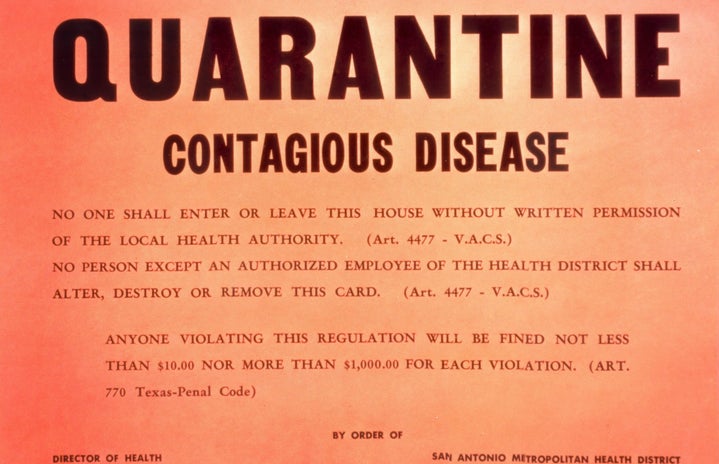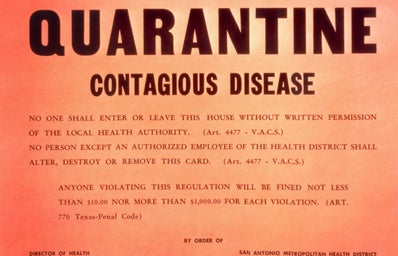As the COVID-19 outbreak continues to escalate worldwide, it seems all people think will help most is raiding all stores in sight and having a year’s supply of toilet paper and hand sanitizer. If not stricken with panic, people are completely disregarding the existence of the virus and its implications, continuing to take advantage of cheap flights and partying their way through spring break. We need to become more aware of the gravity of the situation, find realistic preventative measures, and realize things are going to get worse before they get better.
I personally did not think the Coronavirus was going to become a huge deal, having traveled to India and back, avoiding the virus altogether (promise). We can see it as being blown out of proportion, or for what it really is and take extreme precaution. The death rates continue to skyrocket, especially as some countries handle it better than others and some populations being better equipped. With the number of misconceptions swarming around, Michael Osterholm clears up everything with his insights on The Joe Rogan Experience.
Osterholm, a noted infectious disease epidemiologist and expert at the University of Minnesota, details that this is only the beginning of what’s to come and we have many months left to endure. The underplaying estimates are around 96 million cases, 480,000 deaths, and will result in about 48 million hospitalizations.
Wearing masks or gloves and assuming all normal activities can commence is foolish, as these trends people are succumbing to are unhelpful in the large scheme of things. As Osterholm articulates, the surgical masks (which are rather loose-fitting) are made to stop saliva droplets getting out, and do nothing to stop air getting in. If people who are infected wear them, maybe it can help a bit, but just the presence of those who’ve contracted it is enough to spread the virus anyway.
Aside from the mask and gloves trend, hand sanitizers on various online platforms and in stores have been cleaned out. Ironically enough, sanitizers are ineffective against a virus. Not only do people apparently deem toilet paper a necessity to live and survive, but think stocking up on some sannies will prevent an airborne disease.
Even being around people who “don’t have it” ensures nothing, as it can take up to 14 days to know if one is infected. According to Osterholm, there is definitive evidence that asymptomatic carriers, people who show no symptoms, are significantly contributing to spreading the virus. Limiting close contact at least limits the transmission, but when sharing air, virtually nothing can be done but donning the mask and tricking ourselves into thinking that’s a solid barrier.
People are also rather nonchalant, assuming this virus is only targeting old people, while it affects those with risky health conditions immensely. Obesity makes one susceptible to the disease, as well as long-term smoking, which leaves the lungs in a permanently weakened state. Basically anybody can be infected, but the death rate remains higher in the elderly sector.
Washing our hands has been a huge form of propaganda in a sense, with a TikTok dance to the Vietnamese song, “Ghen,” going viral as an anti-virus song.
Hand-washing is propelled as an insanely important thing to do in stopping diseases spreading, but it is more to give people something to do to feel accomplished. I am not telling everyone to drop everything and stop being clean… just that the data presented is all about air exchange (can’t prevent it), so don’t think some soap scrubbing for 20 seconds will subdue the disease.
The whole “don’t touch your face” debacle is based on no data or facts, as well. Osterholm forwards that the original idea was the virus could get into our bodies through receptors adjacent to our eyes, but there’s no evidence that that’s the case.
Any vaccine-talk should be cut now as well, as we are years away from an effective and safe solution, even if one could be procured in a few days. The Zika virus, a mosquito-borne disease, caused similar panic as it spread from 2015-2016 to various countries, increased by travel. With 80% of cases being asymptomatic as well, the effects were mainly concerning pregnant women and their unborn children.
Sexual transmission was also common, and though the outbreak was contained, the panic was very similar and thankfully did not escalate further. Similarly to how the Coronavirus is occurring near the 2020 Olympics in Japan, Zika ensued during the 2016 Olympics in Rio. Going back to the topic of a possible Corona cure, there is still no Zika virus vaccine; it’s been five years…
We need to come to terms with the fact that this virus isn’t going anywhere for the time being, and even if we may not suffer from contracting it, we need to stop being a catalyst from it spreading to people who will.
Rather than panic-purchasing every existing item in stores, we need to focus on limiting public gatherings, staying in shape, sleeping and eating right, and self-quarantining if we have any symptoms or have traveled. Stay at home—it has never been easier to save lives.


